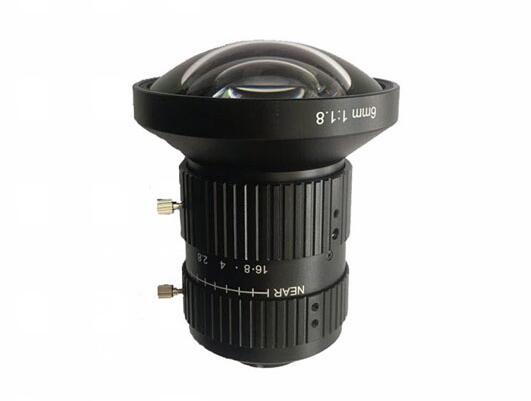Understanding the Role of Industrial Camera Lenses in Machine Vision
Machine vision systems have transformed industrial operations. They enable exact inspection, measurement, and identification activities. The lens quality is vital in these setups. It directly affects the sharpness and precision of the captured pictures. High-resolution lenses for machine vision are critical. They ensure great accuracy in tasks like quality assurance and automation.
The Importance of Lens Quality in Vision Systems
In machine vision setups, the lens focuses light onto an image sensor. Its optical clarity decides how well it captures tiny details. It must pass them to the sensor without warping or losing data. Top-notch lenses with excellent optical parts ensure even small features are shown clearly in the images.
Aligning Imaging Targets with Image Sensors
Correct alignment between imaging targets and sensors is essential. It leads to precise outcomes in machine vision uses. Lenses need careful picking to fit the system’s needs. These include working distance, field of view, and resolution. This setup ensures the whole target area is imaged sharply. No key details get overlooked.
Key Factors in Selecting a Machine Vision Lens
Picking the right lens for machine vision requires thought. Several elements must be weighed to guarantee top performance in specific tasks.
Determining Working Distance and Focal Length
Working distance is the gap between the lens and the imaged object. It influences how much of the scene is recorded and at what detail level. Focal length sets the magnification and view range of the lens. Choosing a lens with the right focal length is key. It helps capture images at the desired size without twisting.
Evaluating Image Size and Quality
The size and clarity of images depend on the lens resolution and its match with sensors. High-resolution lenses, like those from AICO Electronics Limited, provide excellent image quality. They reduce distortion and boost light passage across a wide wavelength range (400~950nm).
Types of Machine Vision Lenses and Their Applications
Various machine vision lenses exist. Each type suits specific needs, offering flexibility and exactness in industrial settings.
Telecentric Lenses for High Accuracy
Telecentric lenses work well for tasks needing precise measurements. They keep magnification steady despite changes in object distance. This ensures consistent results, even if objects shift positions from the camera.
Macro Lenses for Short Working Distances
Macro lens shine when imaging objects up close. They offer high magnification with great image clarity. This makes them perfect for checking tiny parts or detailed features in tight spaces.
Fixed Focal Length Lenses for Versatility
Fixed focal length lenses are adaptable across many uses. Their straightforward and dependable design stands out. They deliver steady imaging without needing tweaks or resets. This suits automated systems where stability matters most.
By grasping these main points about industrial camera lenses, companies can choose wisely. With tech advances from firms like Hangzhou Ai Ke Electronics Co., Ltd., high-resolution lenses keep improving accuracy across industries.
Practical Considerations for Industrial Camera Lens Selection
Aperture Choices for Different Environments
Aperture size affects image quality and depth of field. In dim settings, a wider aperture (lower f-number) lets more light hit the sensor. This brightens images and cuts noise. In bright areas, a narrower aperture (higher f-number) sharpens focus across foreground and background.
Picking the right aperture is crucial. It ensures top image quality in varied lighting. AICO Electronics Limited offers lenses with adjustable apertures. These meet diverse setting demands, ensuring precision no matter the light.
Evaluating Lens Specifications
Choosing an industrial camera lenses means checking its specs closely. Key points include resolution, distortion, weight, and system compatibility. High-resolution lenses give clear images by capturing fine details well. Lenses from AICO Electronics Limited reach up to 200lp/mm (10MP). This guarantees superb image quality for many uses.
Distortion levels matter too. Lower distortion keeps images lifelike, avoiding bends or warps. Also, checking weight and size ensures smooth integration into setups without affecting stability.
Integrating Machine Vision Lenses into AI Systems
The Role of Lenses as the Eyes of AI
In AI-driven vision systems, lenses act as the “eyes.” They gather visual data for analysis and decisions. Lens quality and accuracy shape how well AI interprets complex scenes. High-resolution lenses provide detailed inputs for dependable results.
With clear images and minimal flaws, lenses help AI handle tasks like object detection, flaw spotting, and quality checks accurately. Advanced optics lift AI performance by giving precise visual data to process.
Impact on Overall Performance of Vision Systems
High-resolution lenses greatly improve vision system performance in industry. They sharpen accuracy by capturing fine details for exact measurements or inspections. They also cut errors from poor image quality or misalignment.
Plus, quality optics speed up processing in AI systems. Clear inputs need less computing power to analyze. This lets businesses hit higher output rates while keeping strict quality levels. It raises productivity across industries.
Frequently Asked Questions (FAQs)
What are industrial camera lenses?
Industrial camera lenses are special optical parts. They’re used in machine vision systems to take high-quality images for inspection, measurement, and automation jobs.
How do machine vision lenses improve precision?
They enhance precision with high-resolution imaging. This captures fine details accurately. It also cuts distortion and boosts clarity.
What types of machine vision lenses are available?
Common types include telecentric lenses, great for precise measurements. Macro lenses suit short distances. Fixed-focal-length lenses offer versatile, reliable performance across uses due to their simple, steady design.
What factors should be considered when selecting a machine vision lens?
Key factors include working distance and focal length. Compatibility with sensors’ image size and quality matters too. So do specific task needs, like accuracy or versatility, from providers like Hangzhou Ai Ke Electronics Co., Ltd./AICO Electronics PTE.LTD.
